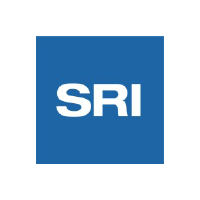Immunotherapy for Pancreatic Cancer: Peptidic Targeting of a Tumor-Specific Glycan
Healthcare1/31/2024 7:00 PM
Join SRI International to explore peptide MGS5 for cancer targeting. Early detection insights. Learn more on WebinarCafe.
Healthcare Webinar Benefits
Explore this webinar on a peptide ligand, called molecular guidance system 5 (MGS5), targeting N-glycolylneuraminic acid (Neu5Gc)-Sialyl LewisA in cancer, enhancing early detection and advancing liposome-based immunotherapy for pancreatic cancer. Glycosylation is a post-translation modification that is commonly altered in cancer, playing fundamental roles in cell signaling, cell migration and invasion, immune modulation and metastasis. Neu5Ac-Sialyl LewisA (CA19-9), part of the Lewis blood antigen family, is a well-studied blood biomarker that is Food and Drug Administration (FDA) approved for the detection of pancreatic cancer. However, its counterpart, N-glycolylneuraminic acid (Neu5Gc)-Sialyl LewisA, is under study in human malignancies due to the inactivation of the cytidine monophospho-N-acetylneuraminic acid hydroxylase (CMAH) gene and the absence of Neu5Gc-Sialyl LewisA specific targeting molecules. Read more... Utilizing a novel screening platform, a peptidic ligand (MGS5) was identified to selectively bind and rapidly internalize into cancer cells. Target identification and validation studies showed MGS5 to be highly specific for the Neu5Gc version of Sialyl LewisA. Utilizing MGS5 for detection, Neu5Gc-Sialyl LewisA was found to be significantly expressed in numerous cancer tissues, such as breast, liver and pancreas, with minimal staining observed across normal tissue types. Neu5Gc-Sialyl LewisA also demonstrated the ability to be used as an early detection biomarker for pancreatic cancer. Tissue samples of low-grade or high-grade pancreatic intraepithelial neoplasia (PanIN) lesions displayed a 2-fold increase in the binding of the MGS5 peptide compared to normal healthy pancreas. Read Less... This webinar will discuss a liposome-based immunotherapy (“Targeted Antigen Loaded Liposomes” TALL) that consists of three modular components: 1) pegylated stealth phospholipid layer, 2) an encapsulated synthetic immunogenic MHC class I restricted peptide derived from the measles virus and 3) MGS5 on the external surface for tumor targeting. MGS5 binds to the surface of the cancer cells via Neu5Gc-Sialyl LewisA and is subsequently internalized allowing for the internalization of the liposome and the release of the encapsulated antigenic peptide. This in turn elicits a robust immune response. TALL, in combination with an anti-programmed cell death protein 1 (PD-1) inhibitor, results in a 10-fold reduction in tumor burden in mice bearing orthotopic breast and pancreatic tumors, compared to using anti-PD-1 alone. Join this webinar to learn not only how MGS5 is a novel peptide for the detection of Neu5Gc- Sialyl LewisA, but it can also serve as a therapeutically relevant cancer targeting agent allowing for the delivery of therapeutics.

